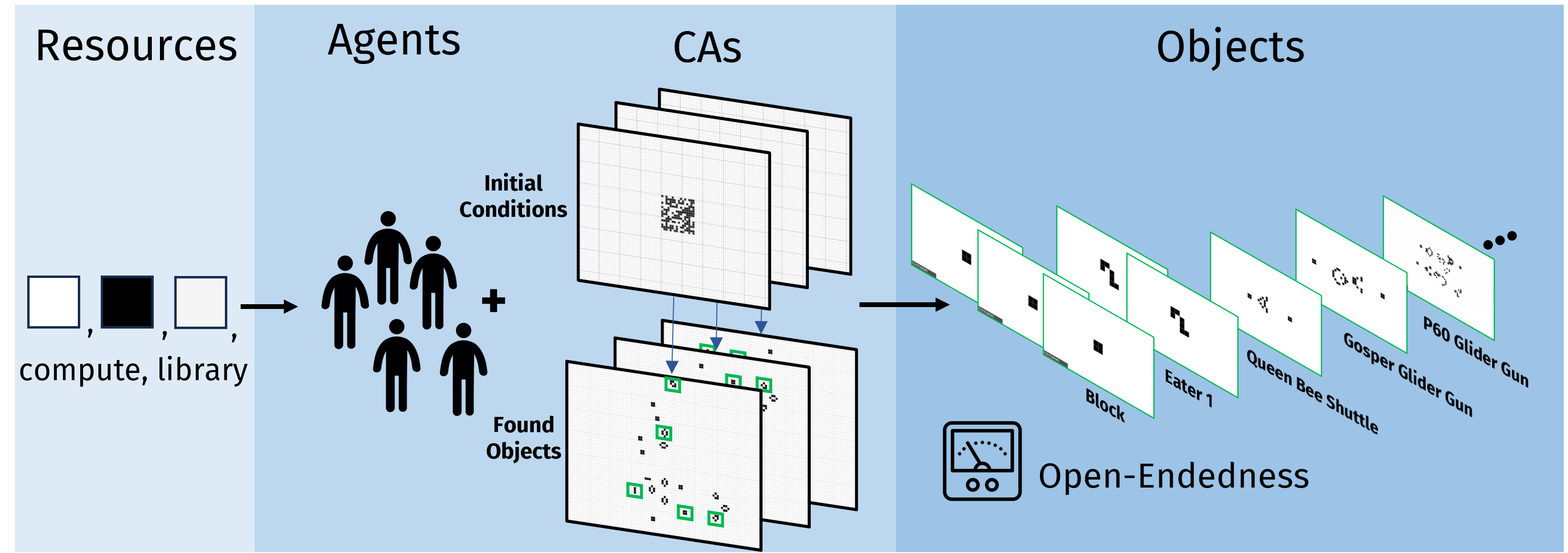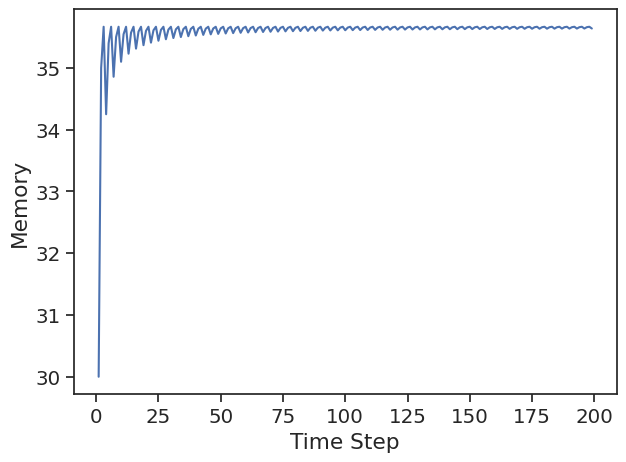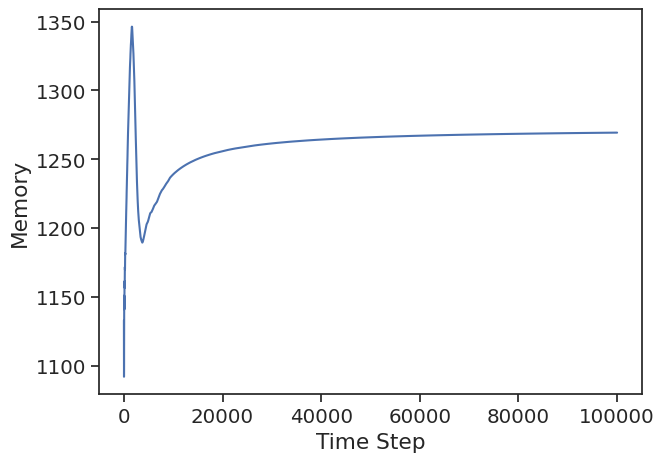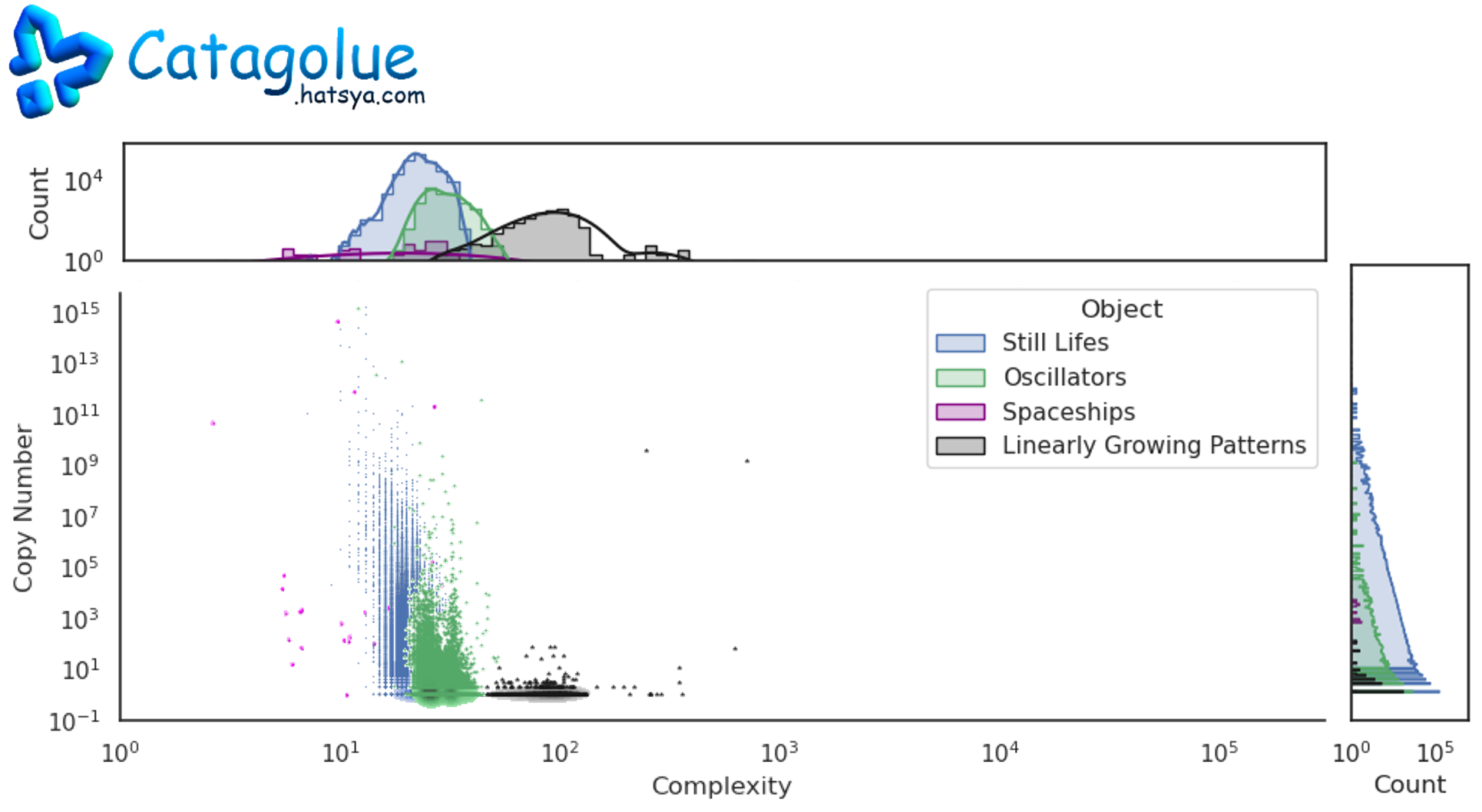Introduction
Consider a set of agents able to modify CA initial conditions and execute them to find objects. These agents execute a CA and insert black, white, or higher-level cells on this CA, or modify already-found patterns to find new patterns in the output. The obtained objects by these agents are quantified by their assembly space and the number of copies found by each agent.
AssemblyCA Framework. Given a system where a set of agents can interact with a CA world and they have access to a limited amount of inputs, computation, and a library of discovered patterns. The agents will generate as a byproduct a series of objects, or CA patterns by modifying the CA initial conditions. By analyzing the output of objects of this system the amount of open-endedness of the system is quantified.












